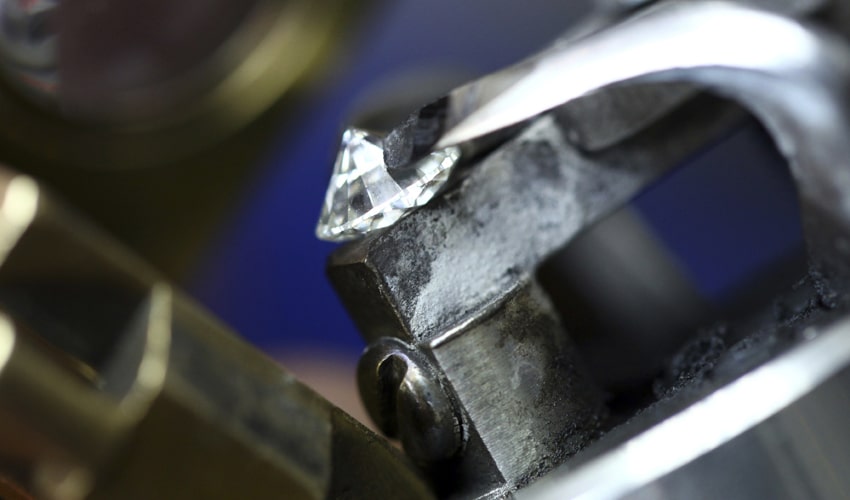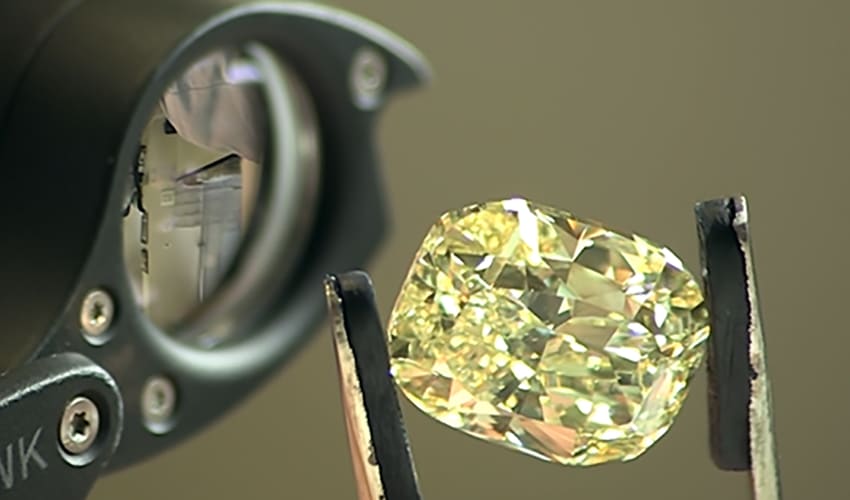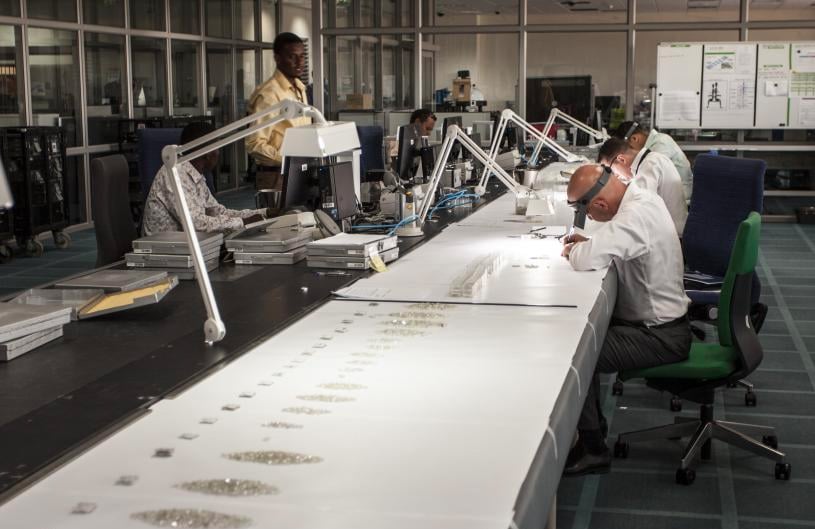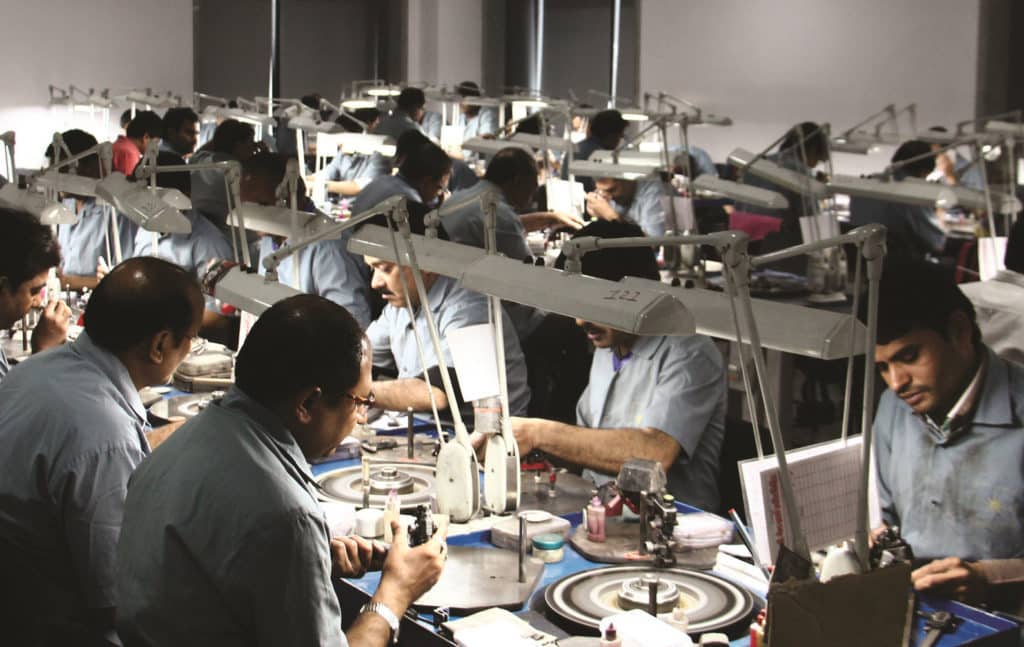Home » Diamond Education Center » The Diamond Pipeline: Midstream
The
STAGE 3
Diamond manufacturing (cutting and polishing) – loose diamonds
It is at this stage that rough diamonds are transformed into polished stones. They first may be cleaved or sawn, and then cut to set their circumference. The facets of the stone are created during the polishing process, and it is these that provide the gemstone with its characteristic fire, scintillation and brilliance.
Much of the diamond’s volume is lost during the manufacturing stage. Indeed, according to Bain and Co. only 20 percent of rough volume ends up as polished set in jewelry, although the 80 percent lost includes 40 to 50 percent of the goods that have been sold as industrial.
Important polishing centers include India, China, Israel, Belgium, Russia, South Africa, Botswana, Thailand and the United States.
India, the world’s largest, lowest-cost cutting and polishing center, accounts for about 90 percent of the global polished-diamond manufacturing by value on its own. Long regarded the dominant manufacturer of small stones, the country has in recent years gained considerable share in the more value-added segment of larger stones as well.
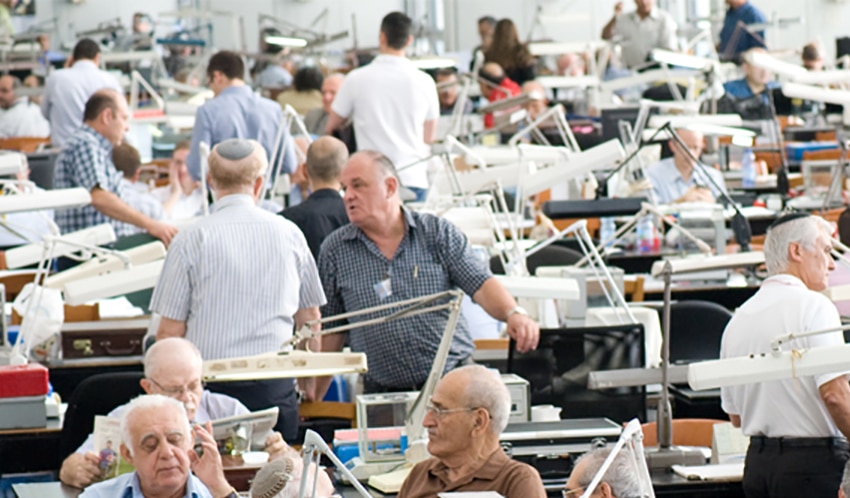
STAGE 4
Loose polished diamond sales
It is at this stage that gem diamonds are traded essentially as a commodity, with prices governed by supply and demand according to the stones’ size and quality.
The bulk of goods are bought and sold in the major trading centers, most of which are anchored by diamond exchanges, of which the most prominent are Ramat Gan, Israel; Antwerp, Belgium; New York”>New York, USA; Mumbai, India; Dubai, UAE; and Hong Kong. In total, there are 29 recognized diamond exchanges operating in 19 different countries.
The diamond exchange should not be confused with a stock exchange or commodities exchange. It is a unique institution, developed specifically to support the trade in loose diamonds, and sometimes the trade in other gemstones as well.
Transactions in the diamond trading centers are conducted one-on-one, dealer-to-dealer. But given the inherent value of a diamond or colored gemstone, it is unlikely that any one dealer will hold a full selection of what a buyer is seeking. However, when they gather together, a critical mass is achieved, enabling buyers to fulfill all their requirements, and at the same time negotiate a fair price.
Most of the business does not take place on the diamond exchange trading floor, but rather in secure offices that are in close proximity, via sales representatives associated with those offices. Increasingly goods are being sold online.
